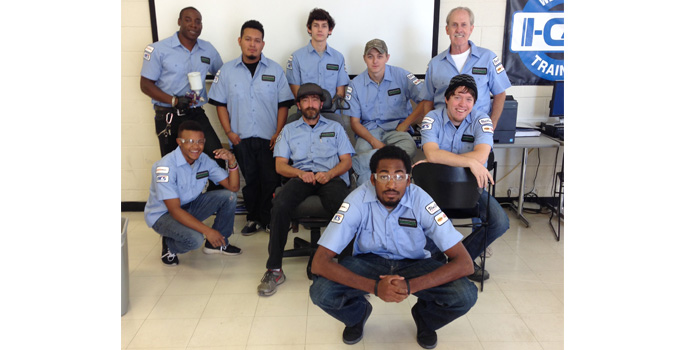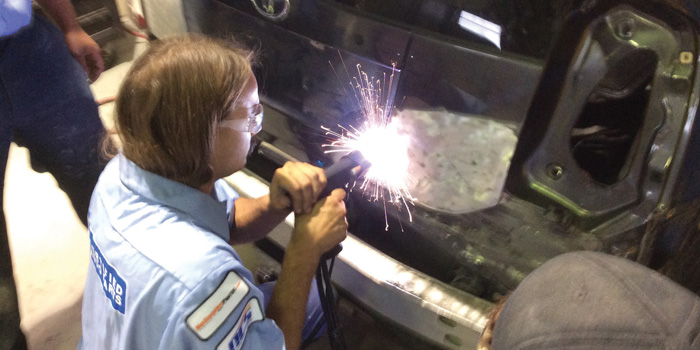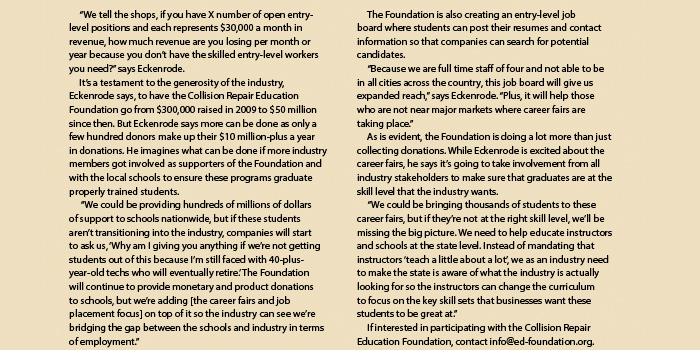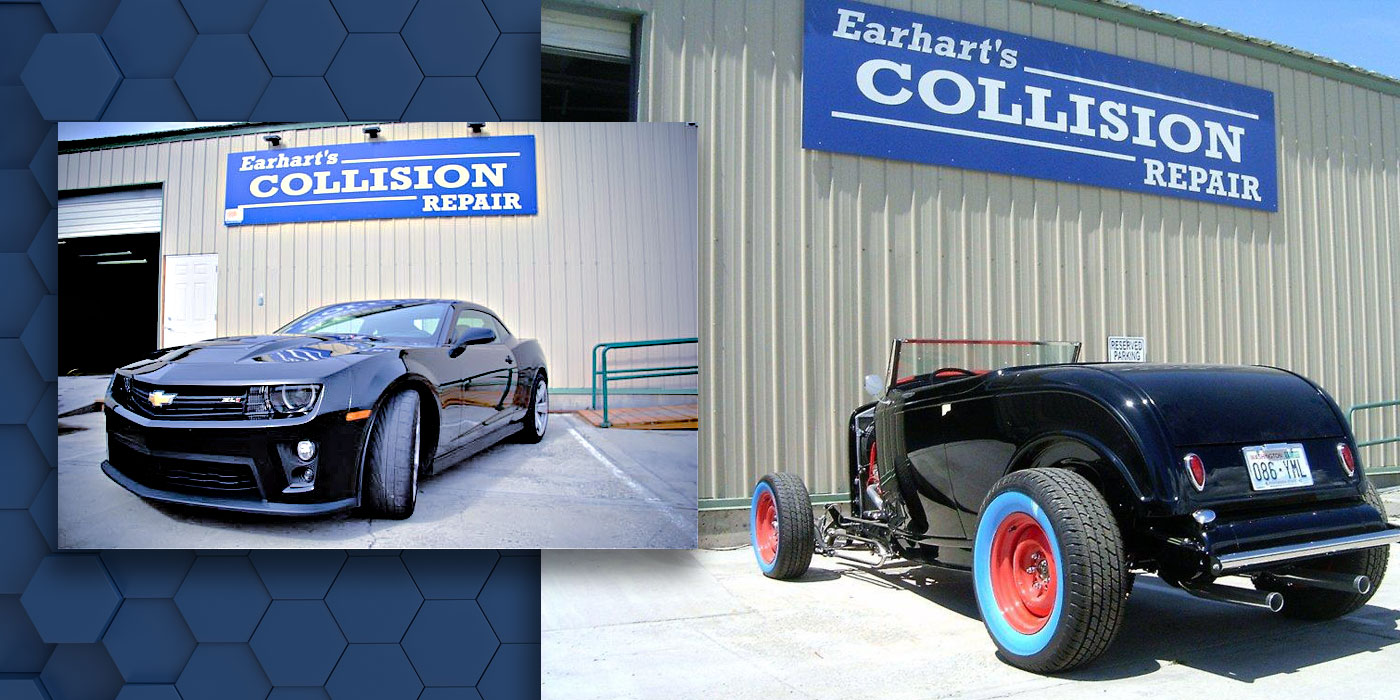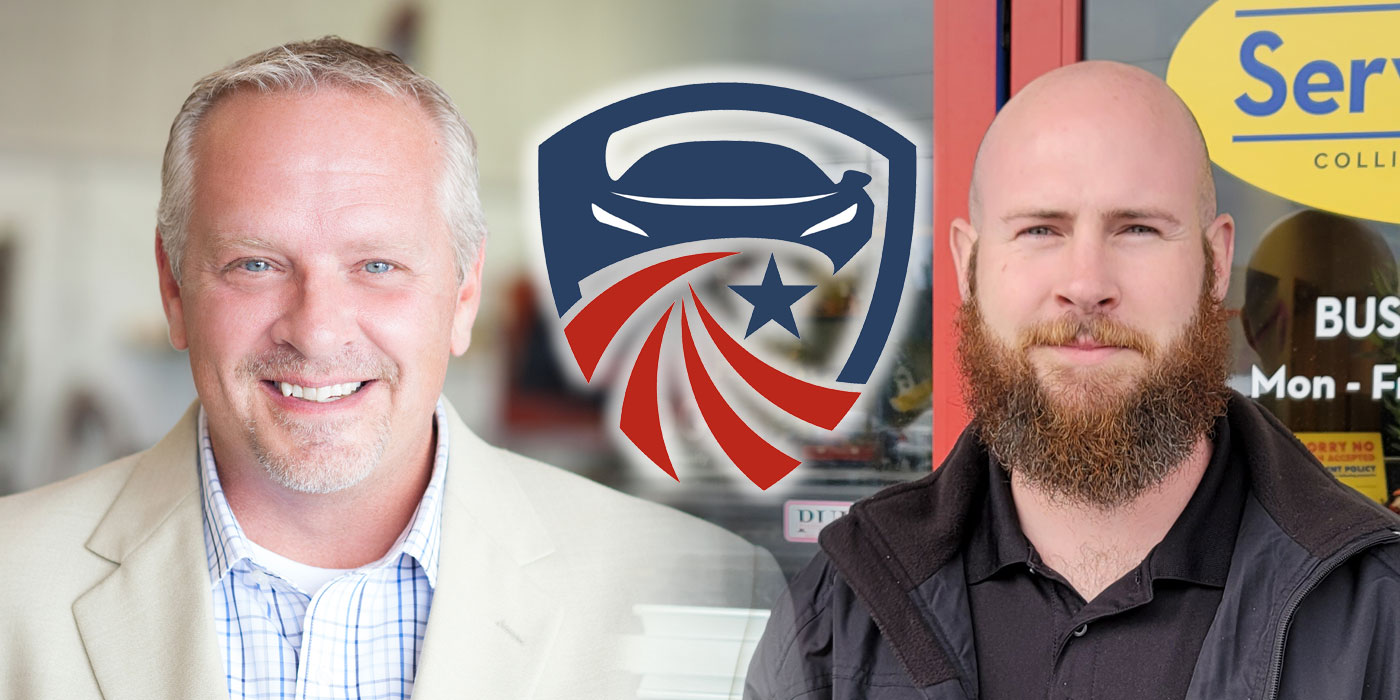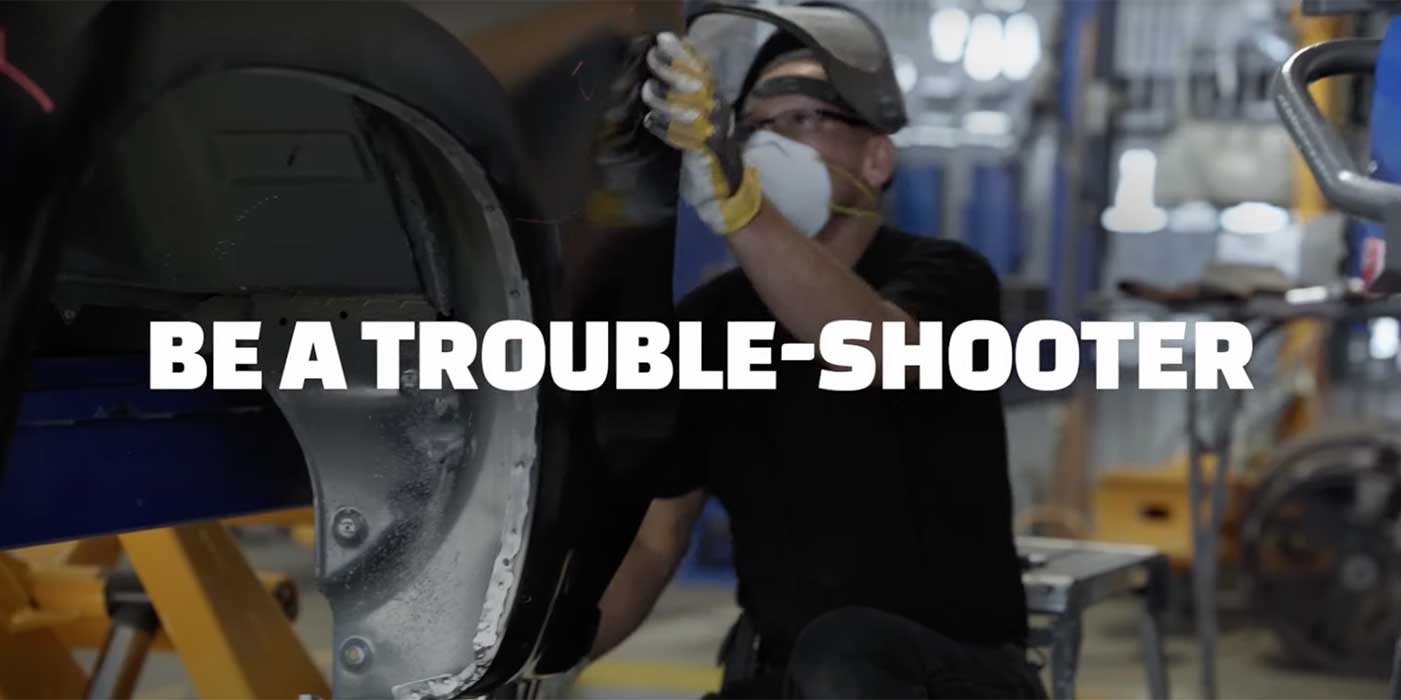When I was asked to write the cover story on the industry’s workforce shortage for this month’s magazine, I thought, why don’t we just dust off the ones I wrote eight or 10 years ago? So much that was written back then is still applicable today, and was the reason I created the Mentors At Work apprenticeship program in 2000: to help address the entry-level workforce shortage at that time. The more things change, it seems, the more they stay the same. Here are a few examples of the articles I’ve written on this subject for BodyShop Business in the past:
- May the (Work) Force Be With You (May 2002): Using the analogy of Obi-Wan Kenobi and Master Jedi Yoda, I discussed how to best match masters with apprentices with the structure necessary to be successful in creating Jedis of your own, i.e. journeymen technicians. I shared my 11 Components of an Effective Mentoring Program:
- Hydrate Your Business (December 2008): You need to start recruiting and training new people now because, like the marathon runner, if you wait until you’re thirsty to take a drink, it’s already too late because dehydration has set in. As an employer, if you’re waiting until you’re thirsty for new employees, dehydration will have already set in. You’ll then have to take steps to re-hydrate yourself and will pay the price in the end. I discussed how to successfully mentor new employees and how to best prepare yourself to retain them.
- Eliminate The Fear Factor (September 2008): Ever feel like the inmates are running the asylum in your shop? In this article, I expressed my opinion that many shops are being held hostage by their technicians. Ever feel that way? I’m sure many of you do. I discussed how to take back control, grow your own skilled workers, and not let your often overpaid technicians run the show and dictate how things will be done in your shop.
- Send Me Your Best Student – Partnering With Vo-Tech Schools (May 2004): Over a decade ago, I wrote about how best to partner with local vo-tech schools so you could position yourself to get the best quality graduates from these programs. Back then, less than 7 percent of shops indicated that they turned to local schools for employees. The strategies in this article hold true today, even more so. And, a promising trend today is that 12 percent of shops now say they turn to schools for hiring new employees. It’s still not enough, but the trend is heading in the right direction. Shops were stealing technicians from each other. There were signing bonuses. Skilled techs held most of the power and a near “free agency” situation existed, with techs going to the highest bidder, having absolutely no loyalty to their employer whatsoever. And then the recession hit. Boom! The year 2008? — and the slow recovery that followed — nearly put an end to the major issues shops were having with finding skilled workers, and did put an end to many businesses. And that held true for several years, until recently. Slowly but surely, we’ve been marching right back to where we were in 2007. And now shops are back to stealing techs from each other, paying signing bonuses, etc.
The Facts
According to the Collision Repair Education Foundation Snapshot of the Collision Repair Industry report from 2013:
- The average age of technicians was just under 39
- 61 percent of techs had been hired from another shop
- 20 percent were hired from a non-automotive industry or as their first job
- 12 percent were hired directly from technical school programs
- Women on the skilled technician side of our industry doubled from 2007! That’s right, going from 1 percent to 2 percent. That’s a huge missed opportunity for shops, closing the door on women without even thinking about it.
- The number of technicians leaving their jobs was reported to be 13.9 percent, or about one in seven, a significant difference from the 27.5 percent that were leaving during the free agency days of 2007. This survey was taken in 2003, and now, nearly three years later, I’ll bet that number is higher than 13.9 percent today, creeping back up toward 20 percent.
- Half of the technicians have been with their current employer for five years or less, which also means that 50 percent have stayed with their current employer, up from 39 percent in 1995. Once again, supply and demand for skilled techs skewed that number in the early to mid-90s.
- Of those who left their jobs, 53 percent left to go work at a competing shop.
- Only 64 percent of shops could identify a local trade or technical school to recruit from.
- 11 percent of shops say they don’t even bother to hire entry-level technicians.
- A positive trend is that 28.8 percent of shops reported that they have at least one employee who serves on a local school advisory committee, up significantly from 19 percent in 2007.
U.S. Department of Labor
The Bureau of Labor Statistics of the U.S. Department of Labor reported that there were 169,100 technicians in the collision repair industry. They project that a 9-percent increase in technicians will be needed over the next eight years to meet our demands. That’s over 15,200 new hires, or an average of over 1,900 per year. That rate of increase is higher than the average for all fields. They also report that the best opportunities in our industry will be available to those who have formal training and certifications of some sort in collision repair. For some great information on wages and employment in the collision repair field, visit: http://1.usa.gov/1OK1vbs.
What Are We Doing Today?
While there are widespread reports of hiring technicians from other shops, there are some positive trends being seen to address what’s once again becoming a serious situation. Many large companies are donating scholarships to the Collision Repair Education Foundation to be used to help train tomorrow’s workforce. A lot of companies are also participating in programs that help develop and place veterans coming out of the military and rejoining civilian life.
Each of the large MSOs have some kind of workforce development program, too. So independents take note: MSOs plan to be around for awhile. They’re putting systems in place to develop their future workforces, which will enable them to compete better without having to play the musical chairs game with techs that so many shops play.
At a forum on workforce development at NACE in Detroit, Service King described features of their Apprentice Development Program that was to launch in Texas, with plans to expand to California and Georgia in late 2015. Their one-year program is designed to immerse new hires into the life of a technician and careers with Service King. They even have a corporate position at their company called “Vice President of Talent Development.” Do you think they’re serious about the workforce of tomorrow? They’re not alone; each MSO has their own plans and systems.
The Mentors At Work program that I founded in 2000 still exists today. I sold it to Farzam Afshar at VeriFacts Automotive in 2007. It has all the key components for being successful with hiring and training new people in-house.
The New Collision Career Institute
I’ve learned of a new program called the Collision Career Institute, a program developed as a combination of online and in-house training, often in partnership with local vo-tech schools, if available. The two main individuals behind this initiative are Charlie Robertson, a professor at Cerritos College in Norwalk, Calif., and Erick Bickett, CEO of Fix Auto USA.
Robertson, who will be the director of the new institute, has done extensive research on Millennials and wrote his Master’s thesis on training them effectively. Bickett has been effectively recruiting, training and retaining technicians at Fix Auto for years. What they have to say, and what they’ve learned and are developing, is of value to everyone, and anyone can participate in the institute. While it’s still early, they’re actively seeking shops that are interested in participating.
I spoke with Robertson and Bickett early in December. Here’s what I learned:
Bickett: “Starting Collision Career Institute is an initiative, one of my passions, and something we’ve done at Fix informally for many years. Our access to qualified technicians is at a more critical level than it has ever been before, and it’s not just the technicians, obviously, it’s repair planners and pretty much all staff within a collision shop. To be able to bring young people in and start to nurture new entrants is critical to our success. The Collision Career Institute is a company that’s being formed to support the collision industry. We’re going out to the collision industry at large – we already have – touching all people who are focused on actually applying some commitment to our strategy.
“Anybody who is in business and plans on being in business for awhile is focused on this. All the MSOs are for sure, and even single shops that are a part of our group are quite concerned about the proliferation of cannibalism that occurs now. This cannibalism raises costs, so it’s probably the No. 1 initiative for us at this time.
“With the Collision Career Institute, we’re designing a program to facilitate and manage the process of bringing an intern into the shop. It’s got a lot of the flavors of what [Mark Claypool] was doing in the early 2000s with Mentors At Work. We’re getting a commitment from shops to invest in their people. We’re encouraging that this is a best practice to start the process of creating a collision shop environment that’s conducive to implementing new interns.
“Our philosophy is all about placement before training instead of training before placement. We get the shop to commit to placing the intern, and then we manage the intern’s life cycle for the first 18 months to get them to a place where they’re either a C-level tech in either body or paint or a beginning repair planner.
“The plan is to integrate new hires into the training plan based on what’s available in the marketplace. It’s probably going to be a combination of I-CAR, maybe a trade school or community college, vendor training, whatever is available out there, and we’ll supplement that with online learning modules.
“We’re seeing cannibalism, signing bonuses, misinformation to get people to move, capitalizing on the short-term returns, incentivizing and ‘get me the money now,’ just all the silliness that doesn’t create long-lasting value. All of that is back again, tracing it back to 2006. That has to change.”
I asked them how the institute, and Robertson’s collision repair training program at Cerritos College, deal with some of the bigger pushback issues I had experienced from shop owners and managers when it comes to hiring new, entry-level people. The issues include:
- Pay plans
- Tool costs
- New hire retention
Here’s what they had to say:
Robertson: “We came up with what we believe is an important method to address the pay plan issue, and that is from day one, we have an agreement of what the pay plan is. We branch it out not just till graduation 18 months from now, but from startup steps. And each progress step of learning, the student gets a small bump in pay. At graduation, they get a bigger bump in pay.
“For both tool costs and retention, 24 months after graduation we have embedded tools as a part of the process. So each module of training, they get more tools that are required to do that module of learning. This way, they’re building a toolbox. At the end of two years after they graduate, if they’re still with the shop they trained with,those tools are signed over to them and become theirs. So the tools can be transferred over to them as part of the reward for staying with the shop.
“From the retention side of that coin, though, is gee, if they have all the tools, what’s to prevent them from leaving? The shop needs to create and foster an environment that will motivate that person to remain with them no matter what. There needs to be a level of loyalty that hasn’t existed much in the industry. Rather than ask, ‘How loyal is this trainee linked to this shop?’ I would ask the question, ‘How loyal are you to your employee?’ You must foster a culture of retention.
“You foster a culture of education and employee development. I don’t just mean to focus on compliance with DRP retention, I’m talking about employee development for self-satisfaction as well as compliance with industry regulations. I’m talking about, does the employee feel fulfilled when they work with you? It’s a different culture than gee, are we in compliance? Yeah, we’ll send you to I-CAR training. Is that to check it off on the box to make sure we retain our Gold Class, or is that to improve their knowledge and understanding of the complexities of new cars so that they can be more competent as they hit the ground tomorrow working on these cars?
“There’s a different mindset, and that’s a cultural change, not a statistical change. Yes, your shop is still Gold Class, but that doesn’t mean you have a culture of retention, a culture of focusing on the need for fulfillment. Does the employee feel fulfilled when they work there? Do they feel they’re valued? Or do they feel they’re a statistic?
“Shops need to shift that, and that’s not a minor change, either. And I don’t know if any major training program is going to change that culture. I think what’s going to have to happen is shops that have that culture will retain their employees, and those that don’t will lose their employees to those shops that do. This is one of the most important items to a Millennial. They need to feel fulfilled in their work. This is one of the trigger points. If you don’t find a way to create and foster that feeling for them, they will go away. Even if they enjoy doing the work, they will not stay. So, this is part of the shift in the culture that needs to change.
“So is it like, ‘Do we have a pay plan? Check. Do we have a tool plan? Check. Yes, we have retention plan, and put someone over retention so now we’re solved.’ No, it’s not a checklist. This is a paradigm shift of the entire focus within the shop. Shops have always been about money and profit, and today they need to change that focus or they will lose the Millennials. The Millennials will not even stay through the end of the training.”

